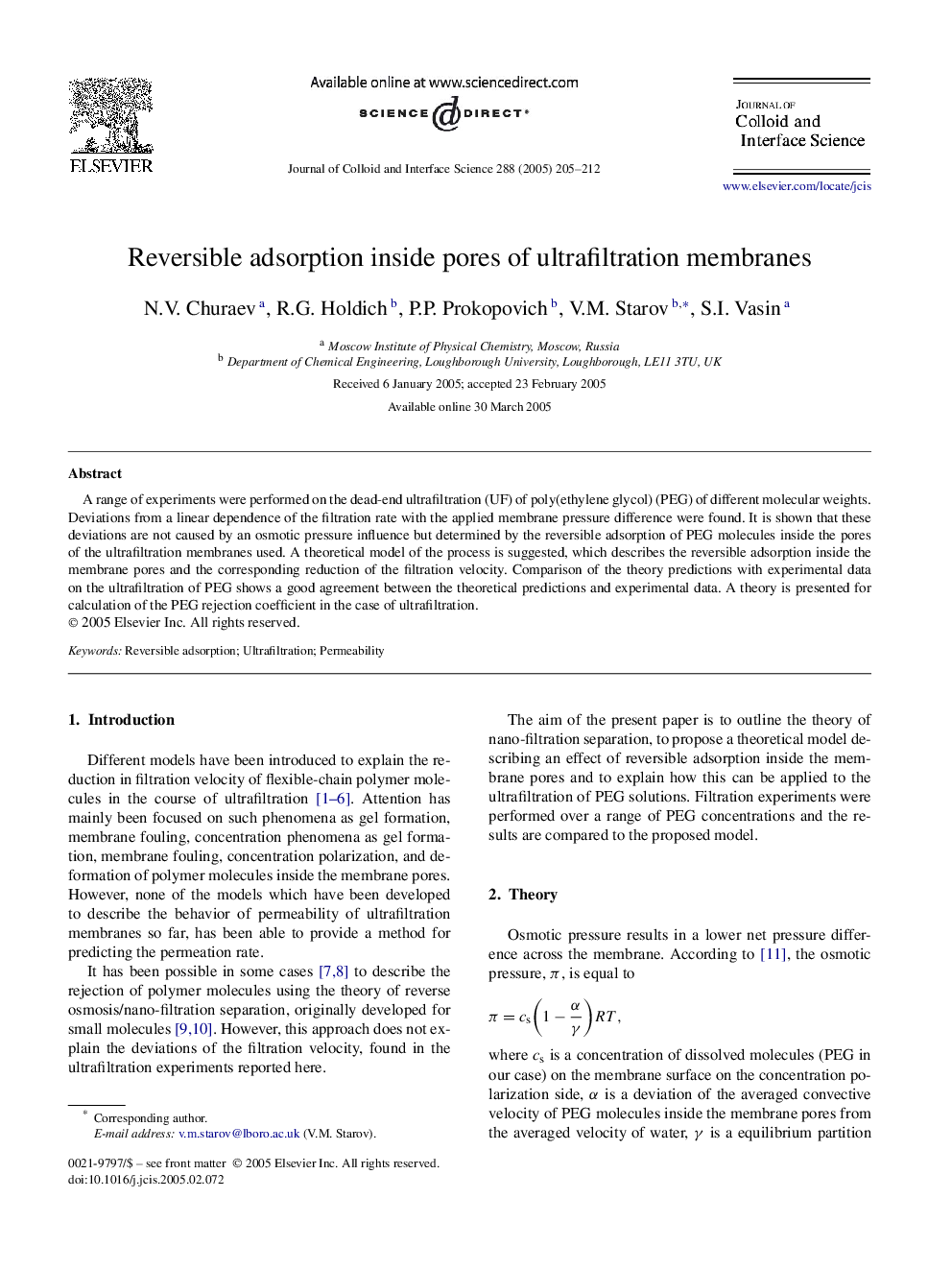| Article ID | Journal | Published Year | Pages | File Type |
|---|---|---|---|---|
| 10377875 | Journal of Colloid and Interface Science | 2005 | 8 Pages |
Abstract
A range of experiments were performed on the dead-end ultrafiltration (UF) of poly(ethylene glycol) (PEG) of different molecular weights. Deviations from a linear dependence of the filtration rate with the applied membrane pressure difference were found. It is shown that these deviations are not caused by an osmotic pressure influence but determined by the reversible adsorption of PEG molecules inside the pores of the ultrafiltration membranes used. A theoretical model of the process is suggested, which describes the reversible adsorption inside the membrane pores and the corresponding reduction of the filtration velocity. Comparison of the theory predictions with experimental data on the ultrafiltration of PEG shows a good agreement between the theoretical predictions and experimental data. A theory is presented for calculation of the PEG rejection coefficient in the case of ultrafiltration.
Related Topics
Physical Sciences and Engineering
Chemical Engineering
Colloid and Surface Chemistry
Authors
N.V. Churaev, R.G. Holdich, P.P. Prokopovich, V.M. Starov, S.I. Vasin,
